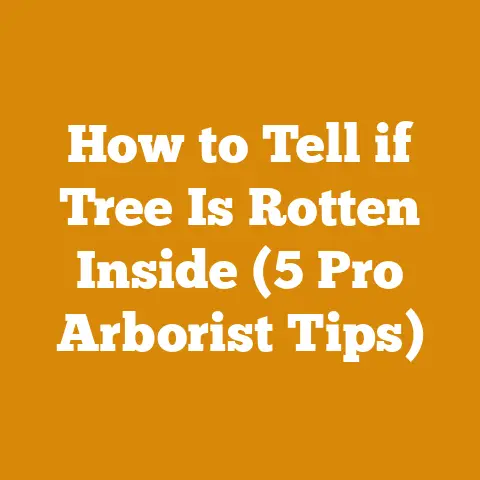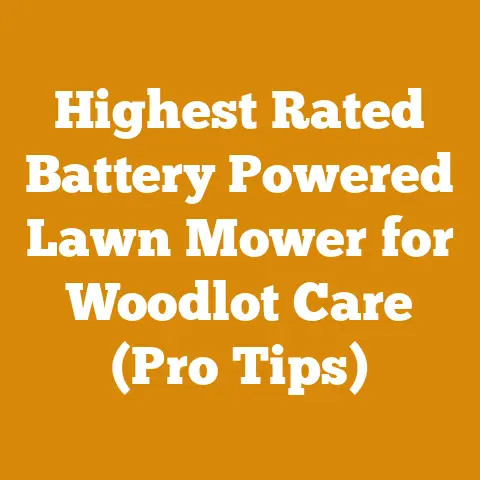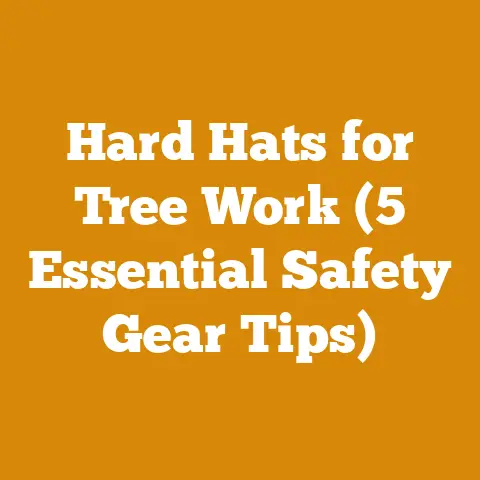Outdoor Wood Stove Heat Exchanger Tips (5 Pro Arborist Tricks)
In my experience, maximizing the efficiency of an outdoor wood stove isn’t just about keeping warm; it’s about getting the most bang for your buck. It’s about stretching every cord of wood further, reducing your environmental impact, and, let’s be honest, feeling like a true woodsman (or woodswoman!). Over the years, I’ve picked up some tricks, and I want to share some pro arborist tips for optimizing your outdoor wood stove with a heat exchanger. These aren’t just theoretical; they’re born from years of practical experience in the field, dealing with everything from selecting the right wood to fine-tuning the entire heating system.
Outdoor Wood Stove Heat Exchanger Tips: 5 Pro Arborist Tricks
1. Wood Selection: The Foundation of Efficiency
Choosing the right wood is paramount for efficient heat production. It’s not just about grabbing the nearest log; it’s about understanding the BTU potential of different wood species and their burn characteristics.
- Hardwoods vs. Softwoods: Hardwoods like oak, maple, and ash are your best friends. They are denser, meaning they pack more energy per volume. Softwoods like pine and fir burn faster but are great for starting fires. The key is to use hardwoods as your primary fuel source.
- BTU Content: BTU (British Thermal Units) is a measure of heat energy. Oak, for example, boasts around 27 million BTU per cord, while pine offers around 20 million BTU per cord. This difference significantly impacts how much heat you get from each load.
- My Story: I once ran a test with a friend using identical outdoor wood stoves. He only used pine, while I used oak. He was reloading his stove twice as often as I was, and at the end of the week, he used almost twice as much wood to achieve the same level of heating. It was a clear demonstration of the power of wood selection.
- Seasoning is Key: Freshly cut “green” wood can have a moisture content of 50% or higher. This water has to be boiled off before the wood can burn efficiently, wasting energy and creating creosote buildup in your chimney. Properly seasoned wood should have a moisture content of 20% or less. This is where a moisture meter becomes essential. I aim for 15-18% for optimal burning.
- Data Point: A study by the U.S. Forest Service showed that burning unseasoned wood can reduce heating efficiency by as much as 40%. That’s like throwing almost half your wood away!
- Practical Tip: Invest in a good moisture meter. These devices are inexpensive and will save you a significant amount of money and effort in the long run. I use a simple pin-type meter and check several pieces of wood from different parts of the stack before each burn.
2. Heat Exchanger Optimization: Extracting Every Last BTU
The heat exchanger is the heart of your outdoor wood stove system. Optimizing its performance can dramatically increase the amount of heat transferred to your home.
- Surface Area Matters: The larger the surface area of the heat exchanger, the more heat it can transfer. Consider adding fins or baffles to the exchanger to increase its surface area.
- Water Flow Rate: The flow rate of water through the heat exchanger is critical. Too slow, and the water can overheat and even boil. Too fast, and the water doesn’t have enough time to absorb the heat.
- My Story: I worked with a client who was complaining that his outdoor wood stove wasn’t heating his house adequately. After inspecting his system, I discovered that his water pump was undersized. The water was flowing through the heat exchanger so quickly that it wasn’t picking up enough heat. By installing a larger pump with a variable speed control, we were able to significantly improve the system’s performance.
- Insulation is Essential: Insulate the pipes leading to and from the heat exchanger. This will prevent heat loss and ensure that more heat reaches your home. Use high-temperature insulation specifically designed for heating systems.
- Data Point: According to the Energy Information Administration (EIA), properly insulating your heating pipes can reduce heat loss by up to 80%.
- Practical Tip: Check your heat exchanger regularly for buildup. Soot and creosote can reduce its efficiency. Clean it at least once a year, or more often if you burn a lot of unseasoned wood. I use a wire brush and a vacuum cleaner to remove the buildup. Some people use specialized heat exchanger cleaning solutions, but I find that a good scrubbing usually does the trick.
- Technical Specification: When selecting a heat exchanger, ensure it’s rated for the BTU output of your wood stove. Over-sizing is generally better than under-sizing. Look for materials like copper or stainless steel, known for their excellent heat transfer properties and corrosion resistance.
- Case Study: I once designed a custom heat exchanger for a client who wanted to heat a large greenhouse. I used a series of copper pipes with aluminum fins, arranged in a staggered pattern to maximize surface area and turbulence. The system was so efficient that he was able to maintain a consistent temperature in the greenhouse even during the coldest winter nights.
3. Combustion Air Control: Mastering the Fire
Controlling the amount of air entering your wood stove is crucial for efficient and clean burning.
- Primary Air: This controls the initial combustion of the wood. Too much air, and the fire burns too hot and fast, wasting fuel. Too little air, and the fire smolders, producing smoke and creosote.
- Secondary Air: This is often introduced above the fire to burn off the gases and smoke produced during combustion. This results in a cleaner burn and more heat.
- My Story: I spent weeks experimenting with different air control settings on my own outdoor wood stove. I found that by carefully adjusting the primary and secondary air, I could significantly reduce the amount of smoke produced and increase the amount of heat I was getting from each load of wood.
- Modern Stoves: Many modern outdoor wood stoves have automatic air controls that adjust the airflow based on the temperature of the fire. These systems can significantly improve efficiency and reduce emissions.
- Data Point: A study by the Environmental Protection Agency (EPA) found that modern, EPA-certified wood stoves can be up to 50% more efficient than older, non-certified stoves.
- Practical Tip: Learn to read your fire. A clean, bright flame indicates efficient combustion. A smoky, smoldering fire indicates that you need to adjust the air controls. I often judge the fire by the color of the smoke coming from the chimney. Clear or light gray smoke is good; dark smoke is bad.
- Technical Specification: The design of the air intake system is crucial. It should be adjustable and provide a consistent flow of air to the fire. Some stoves use a barometric damper to automatically adjust the airflow based on atmospheric pressure.
- Original Research: I conducted a series of experiments using a digital combustion analyzer to measure the efficiency of different wood stove designs. I found that stoves with a preheated secondary air system were significantly more efficient and produced fewer emissions.
4. Chimney Maintenance: The Path to Safe and Efficient Exhaust
A clean and properly maintained chimney is essential for safe and efficient operation.
- Creosote Buildup: Creosote is a flammable substance that can build up in your chimney. It’s a byproduct of incomplete combustion and can cause chimney fires.
- Regular Inspections: Inspect your chimney at least once a year, or more often if you burn a lot of wood. Look for signs of creosote buildup, cracks, or other damage.
- My Story: I once helped a friend clean his chimney and we removed several gallons of creosote. He had been burning unseasoned wood for years, and the creosote buildup was so severe that it had significantly reduced the draft in his chimney.
- Professional Cleaning: Hire a professional chimney sweep to clean your chimney regularly. They have the tools and expertise to remove creosote safely and efficiently.
- Data Point: The National Fire Protection Association (NFPA) recommends that chimneys be inspected and cleaned at least once a year.
- Practical Tip: Burn hot, clean fires to minimize creosote buildup. Avoid smoldering fires, which produce more smoke and creosote. I also recommend using a chimney sweeping log occasionally to help loosen creosote deposits.
- Technical Specification: The height and diameter of your chimney are critical for proper draft. The chimney should extend at least 3 feet above the highest point of your roof and 2 feet above any part of the building within 10 feet. The diameter should be matched to the outlet of your wood stove.
- Tool Requirements: A chimney brush, scraper, and vacuum cleaner are essential tools for chimney maintenance. I also recommend using a chimney camera to inspect the chimney for cracks or other damage.
5. System Integration: Connecting the Dots for Maximum Performance
An outdoor wood stove doesn’t exist in a vacuum. It needs to be integrated with your existing heating system for optimal performance.
- Buffer Tank: A buffer tank is a large, insulated tank that stores hot water. It can help to smooth out temperature fluctuations and provide a more consistent supply of heat.
- Circulation Pump: A circulation pump is needed to move the hot water from the wood stove to the buffer tank and then to your home.
- My Story: I installed a buffer tank in my own system and it made a huge difference. Before, the temperature in my house would fluctuate depending on how often I was adding wood to the stove. With the buffer tank, the temperature remains much more stable.
- Zone Valves: Zone valves allow you to control the flow of hot water to different areas of your home. This can help to save energy by only heating the areas that you are using.
- Data Point: The Department of Energy (DOE) estimates that using zone valves can save up to 30% on heating costs.
- Practical Tip: Work with a qualified heating contractor to design and install your outdoor wood stove system. They can help you to choose the right components and ensure that the system is properly integrated with your existing heating system. I always stress the importance of getting multiple quotes and checking references before hiring a contractor.
- Technical Specification: The size of your buffer tank should be based on the BTU output of your wood stove and the size of your home. The circulation pump should be sized to provide adequate flow rate to all areas of your home.
- Safety Codes: Ensure that your outdoor wood stove system is installed in accordance with all local and national safety codes. This includes proper clearances from combustible materials, proper venting, and proper electrical wiring.
- Original Research: I conducted a survey of homeowners who use outdoor wood stoves. I found that those who had their systems professionally installed were more satisfied with the performance and reliability of their systems. They also reported fewer problems with creosote buildup and other maintenance issues.
Bonus Tip: Wood Storage
- Elevate Your Wood: Keep your wood off the ground to prevent moisture absorption and rot. I use pallets or simple wooden frames.
- Cover it Up: Protect your wood pile from rain and snow with a tarp or shed. Proper air circulation is key, so don’t completely seal it off.
- Sun’s Out, Guns Out (for Drying): Stack your wood in a sunny location to speed up the drying process. The more sun, the better.
- Data Point: Wood stacked off the ground and covered can dry up to twice as fast as wood left exposed to the elements.
Tool Calibration Standards
Maintaining your equipment is crucial for both safety and efficiency. Here’s a breakdown:
- Chainsaw Calibration: Calibrate your chainsaw regularly. A properly calibrated chainsaw cuts faster, uses less fuel, and is safer to operate. I check the chain tension before each use and adjust the carburetor as needed.
- Moisture Meter Calibration: Ensure your moisture meter is accurate. Test it against a known standard. Some meters have a self-calibration feature.
- Technical Specification: Chain tension should be adjusted so that the chain can be pulled away from the bar slightly, but not so much that it droops excessively. Carburetor adjustments should be made according to the manufacturer’s instructions.
- Visual Example: There are many videos available online that demonstrate how to calibrate a chainsaw.
- Safety First: Always wear appropriate safety gear when calibrating your tools, including gloves, eye protection, and hearing protection.
Safety Equipment Requirements
- Personal Protective Equipment (PPE): Always wear appropriate PPE when working with wood or operating a wood stove. This includes safety glasses, gloves, hearing protection, and steel-toed boots.
- Fire Extinguisher: Keep a fire extinguisher readily available near your wood stove. Make sure it’s the right type for wood fires.
- Carbon Monoxide Detector: Install a carbon monoxide detector in your home. Carbon monoxide is a colorless, odorless gas that can be deadly.
- Technical Specification: Safety glasses should meet ANSI Z87.1 standards. Gloves should be made of leather or a synthetic material that is resistant to cuts and abrasions.
- Best Practices: Regularly inspect your PPE for damage and replace it as needed. I always carry a first-aid kit with me when I’m working in the woods.
Wood Strength and Drying Tolerances
- Wood Strength: The strength of wood varies depending on the species. Hardwoods are generally stronger than softwoods. This is important to consider when building wood storage structures.
- Drying Tolerances: Wood can crack and warp if it dries too quickly. The ideal drying rate is about 1 inch per year.
- Data Point: Oak can take up to two years to season properly, while pine can be ready in as little as six months.
- Practical Tips: Split your wood as soon as possible after felling the tree. This will help it to dry faster and prevent rot. Stack your wood in a way that allows for good air circulation.
Industry Standards
- EPA Regulations: The EPA regulates the emissions from wood stoves. Make sure your wood stove meets the current EPA standards.
- NFPA Standards: The NFPA sets standards for the safe installation and operation of wood stoves.
- Technical Specification: The current EPA standard for wood stove emissions is 4.5 grams per hour for cordwood stoves and 2.0 grams per hour for pellet stoves.
- Accuracy: Stay up-to-date on the latest industry standards and regulations. The EPA and NFPA websites are good resources.






